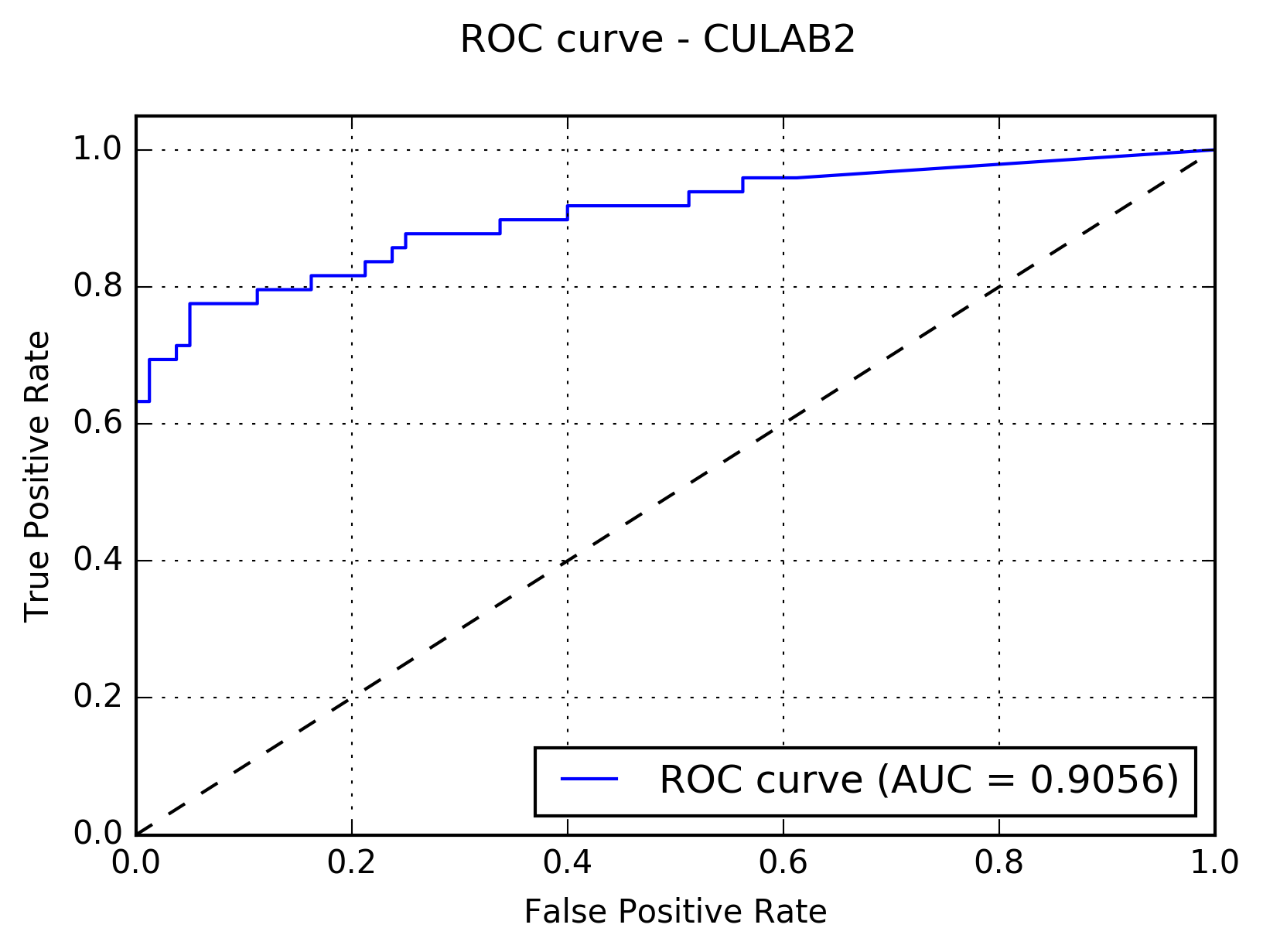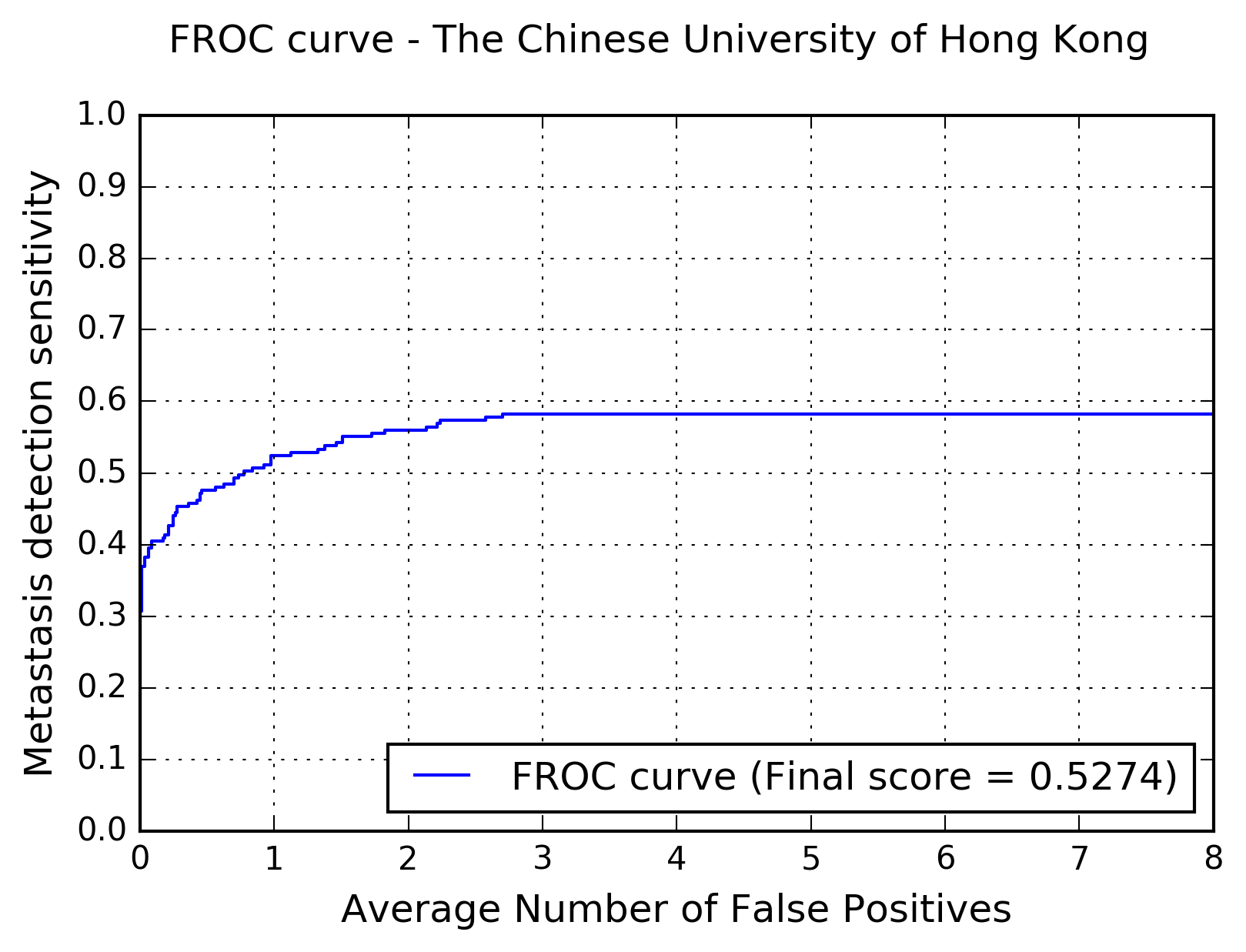Department of Computer Science and Engineering, The Chinese University of Hong Kong, Sha Tin, Hong Kong
Authors:Hao Chen, Huang-Jing Lin, Qi Dou, and Pheng-Ann Heng
Abstract:In this ISBI challenge, we tackled the problem of automatic metastasis detection by a novel framework with deep cascaded networks. This united framework consists of two components integrated in a cascaded manner. The first light network retrieves the candidates by scanning the whole sliding image (level 1) in a fast speed while maintaining a high sensitivity. The following fine-tuning deep neural network with powerful residual model aims at discriminating the candidates (level 0) with a high accuracy. For the post-processing, the metastasis was localized in the centers of clusters on the probability mask.
Results:The following figure shows the receiver operating characteristic (ROC) curve of the method.

The following figure shows the free-response receiver operating characteristic (FROC) curve of the method.

The table below presents the average sensitivity of the developed system at 6 predefined false positive rates: 1/4, 1/2, 1, 2, 4, and 8 FPs per whole slide image.
| FPs/WSI | 1/4 | 1/2 | 1 | 2 | 4 | 8 |
| Sensitivity | 0.440 | 0.476 | 0.524 | 0.560 | 0.582 | 0.582 |
